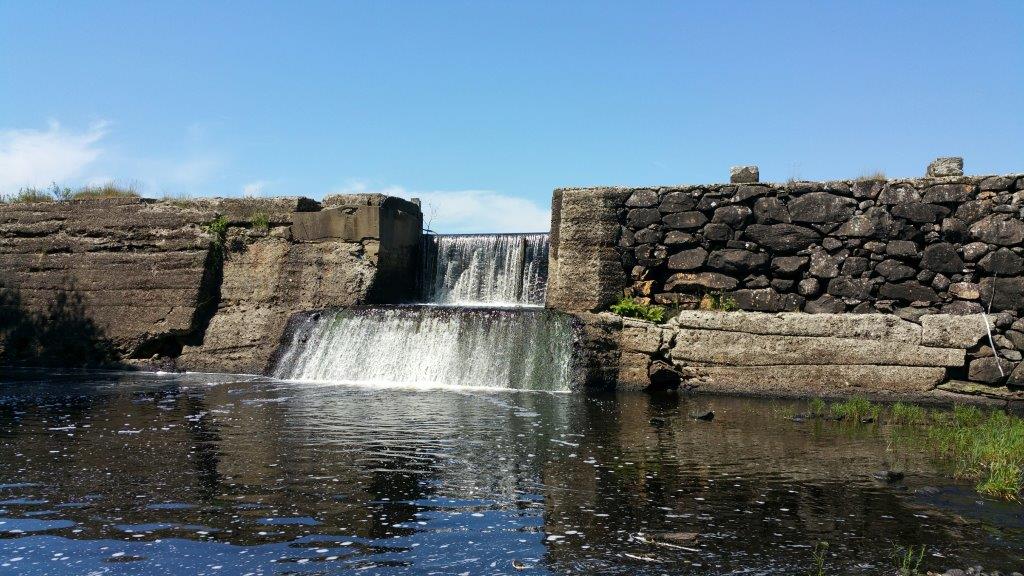Millpond Stone Dam
Charles Perry of Eastport had been “buying property in Whiting for some time and had built the stone dam in 1830.” Peavey and his son William S. owned several businesses for many years in the stone dam area, including “a lumber mill, a grist mill, a carding mill, a shipyard, and shop and a store.”
“In 1860 the County Commissioners ordered William S. Peavey to construct a fish way… through or over the second (stone) dam” and gave specific instructions for building it. In 1880 it was voted that mill and dam owners on Orange Stream keep fish ways open free of charge.
In 1915, Lester Crane owned the mill (at the dam) which was “called the Orange River Lumber company”. The Crane brothers, Lester, Walter, and Allan were the last owners, rebuilding the mill in 1921 and losing it by fire in the 1950s.
The millpond at the stone dam became the water source for the Whiting Volunteer Fire Department and, at times, other fire departments in the area. Residents within a five-mile radius have significantly lower fire insurance premiums because of the available water, including the adjacent unorganized territories. The millpond, which is accessible from both sides, is a continuously replenishing water source which would not go dry in a 100-year drought, according to tests done at the site. It provided safety for residents during a major forest fire in 1985 when the village was under threat of evacuation. It has been estimated that without that water supply the village could easily have been destroyed.
The millpond has been drained by the fire department periodically for inspection and maintenance. Any needed work has been done by the fire department and other volunteers.
The dam, located at the Millpond at the intersection of Routes 1 and 189, creates a beautiful scenic area with its own habitat. It is esthetically enhancing to the center of the village and across from the historic Union Meeting House. The stone dam itself was determined by the Maine Historic Preservation Commission to be eligible for the National Register of Historic Places. For a structure to be actually placed on the register, the owners have to complete the process. Although that has not been done, the eligibility status of the dam testifies to its historical and cultural value to the Town and the State.
Note: More information can be obtained from the History of Whiting, Maine and all quotations in this article are from that resource.

